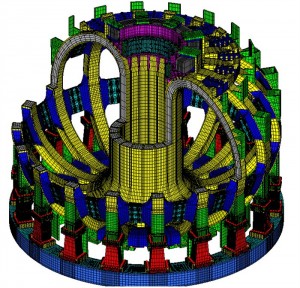
Over the past few days (4-12 April 2016) our Fusion group manager Mervi Mantsinen visited the JET tokamak at Culham, United Kingdom, to take part in the EUROfusion experimental JET campaign.

Over the past few days (4-12 April 2016) our Fusion group manager Mervi Mantsinen visited the JET tokamak at Culham, United Kingdom, to take part in the EUROfusion experimental JET campaign.
April 2016 edition of Physics World has a focus issue devoted to nuclear energy: fission and fusion. It contains several interesting fusion articles including ITER, private fusion ventures and Wendelstein 7-X. Check it out here.
Twists and turns Germany’s Wendelstein 7-X stellarator will use a complex magnetic-field design to sustain a hydrogen plasma for about 30 min. (IPP/Wolfgang Filser )

Source: Princenton Plasma Physics Laboratory (Larry Bernard)

A new kind of metal could make nuclear power plants more robust by resisting the damage that radiation does to traditional steel.
When neutrons from nuclear cores smack into surrounding structures, they can knock atoms out of place, which makes steel brittle. This means plants periodically require expensive and time-consuming repairs.
So Kai Nordlund, professor in Computational Materials Physics at the University of Helsinki, Finland, and his colleagues tested hybrid metals called high-entropy alloys, which have randomly placed atoms. They ran simulations to see which combinations might be toughest, then made thin discs of the winning metals and fired a beam of ions at them to simulate what might happen in a real nuclear reactor.

We are impressed by the new numerical model representing the entire ITER Toroidal Field (TF) coil system (18 coils in total) developed by F4E.